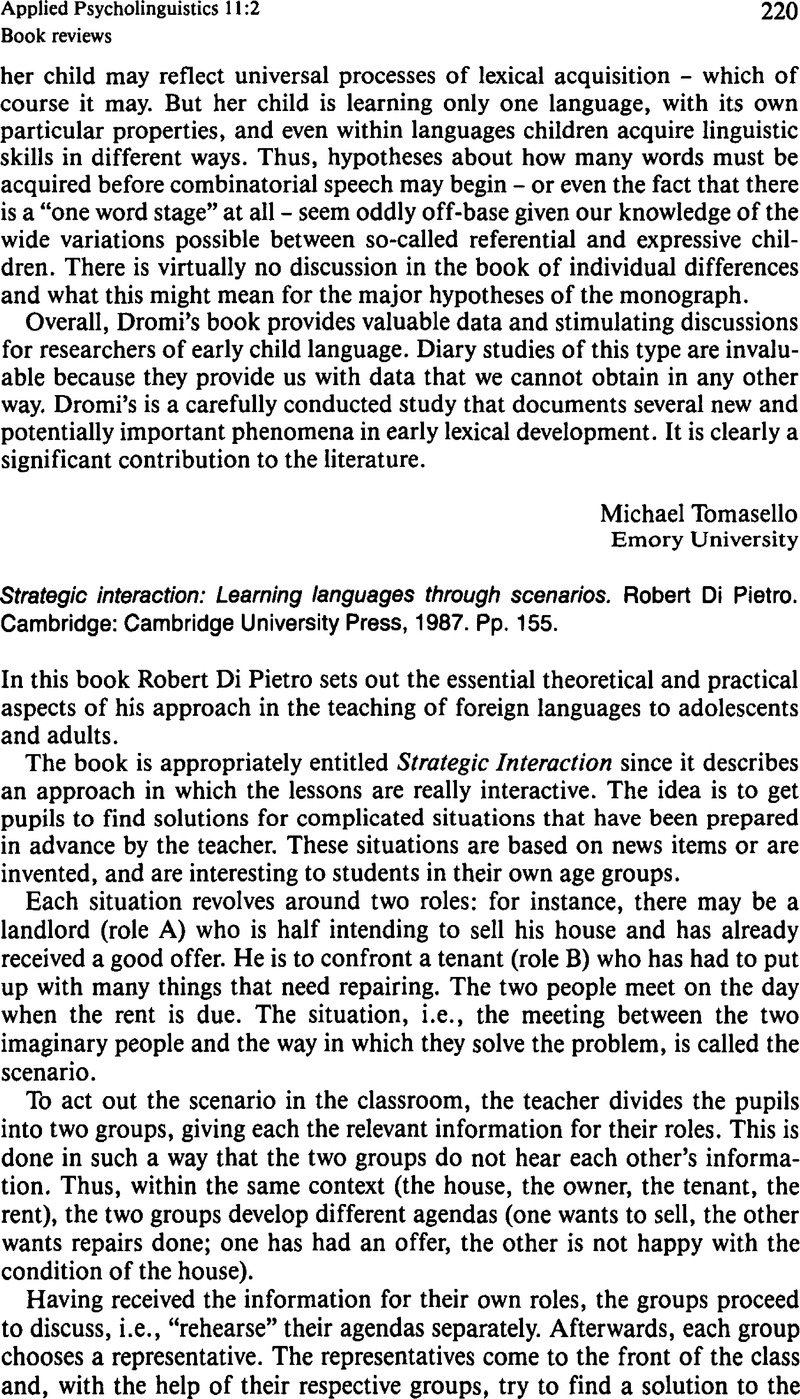No CrossRef data available.
Article contents
Strategic interaction: Learning languages through scenarios. Robert Di Pietro. Cambridge: Cambridge University Press, 1987. Pp. 155.
Published online by Cambridge University Press: 28 November 2008
Abstract
An abstract is not available for this content so a preview has been provided. Please use the Get access link above for information on how to access this content.

- Type
- Book Reviews
- Information
- Copyright
- Copyright © Cambridge University Press 1990
References
REFERENCES
Bruner, J. S. (1975). From communication to language. A psychological perspective. Cognition, 3, 255–287.CrossRefGoogle Scholar
Di Pietro, R. (1988). Scenario writing: A means to promote interactive discourse. Delaware Papers in Linguistics, 1, 1–9.Google Scholar


